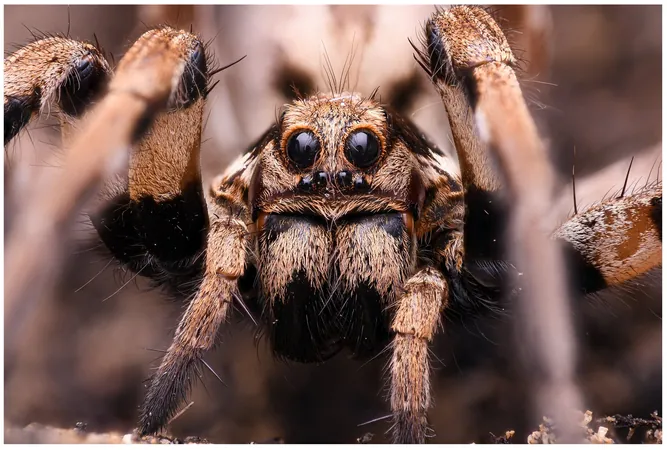
Unleashing the Hidden Bioeconomic Potential of Spider Venom Enzymes
2024-10-07
Author: John Tan
Introduction
Spiders, those often misunderstood creatures, wield an incredible chemical arsenal not just for capturing prey but also for self-defense. While the small neurotoxins that target the nervous systems of their victims have been the centerpiece of scientific research for years, a team from the LOEWE Center for Translational Biodiversity Genomics (TBG) in Hesse, Germany, has uncovered a remarkable and largely ignored aspect of spider venom: enzymes.
Diversity of Spider Venom Enzymes
These enzymes, integral to a range of biochemical reactions, exhibit a diversity previously overlooked. "Our findings suggest that these proteins could play a crucial role in bioeconomic applications," emphasizes Dr. Tim Lüdecke, who leads the Animal Venomics working group at the Fraunhofer Institute for Molecular Biology and Applied Ecology in Giessen.
The Complexity of Spider Venom
With approximately 52,000 spider species around the globe, they produce the most complicated venoms among all animals. Astonishingly, the venom of a single spider species may contain over 3,000 different molecules, predominantly neurotoxins used to subdue insects. Yet, the research team’s latest work, recently published in the prestigious journal *npj Biodiversity*, reveals the presence of over 140 different enzyme families in spider venom—an astounding discovery that reshapes our understanding of venom complexity.
Insights and Applications
As we focused predominantly on neurotoxins in previous studies, we dramatically underestimated the chemical diversity present in spider venoms," adds Dr. Lüdecke. This new focus not only paves the way for deeper insights into the evolution and functionality of spider venoms but also introduces exciting possibilities for their application.
The Role of Enzymes in Bioeconomy
Enzymes play a pivotal role in the bioeconomy, catalyzing chemical reactions with minimal by-product formation and low energy consumption while being biodegradable. "Industries are actively seeking innovative enzyme sources," states Josephine Dresler, a Ph.D. student and the study's primary author, who elaborates that the spiders’ enzymes could be particularly useful in environmentally friendly applications like detergents or waste management due to their properties that can break down fats or proteins.
Future Research Directions
The implications of the Giessen team’s findings are profound, suggesting that spider venom may offer untapped resources for various industries. While previous research primarily targeted medical and agricultural applications for spider venom, these new insights suggest the establishment of an entirely new field of applied research focusing on ecological sustainability and industrial innovation.
Conclusion and Implications
However, Dr. Lüdecke cautions that this is just the tip of the iceberg. "Less than 1% of all spider species have been studied for venom composition, so we are just beginning to scratch the surface. The remaining 99% of the world's spider fauna holds the promise of even more groundbreaking discoveries."
As the world seeks sustainable bioeconomic solutions, it may be time to shift our perspective towards these eight-legged marvels—who knew spiders could hold the key to a greener, more sustainable future? Keep an eye on ongoing research, as the next big breakthrough could be lurking in the shadows, waiting to be uncovered!



 Brasil (PT)
Brasil (PT)
 Canada (EN)
Canada (EN)
 Chile (ES)
Chile (ES)
 España (ES)
España (ES)
 France (FR)
France (FR)
 Hong Kong (EN)
Hong Kong (EN)
 Italia (IT)
Italia (IT)
 日本 (JA)
日本 (JA)
 Magyarország (HU)
Magyarország (HU)
 Norge (NO)
Norge (NO)
 Polska (PL)
Polska (PL)
 Schweiz (DE)
Schweiz (DE)
 Singapore (EN)
Singapore (EN)
 Sverige (SV)
Sverige (SV)
 Suomi (FI)
Suomi (FI)
 Türkiye (TR)
Türkiye (TR)